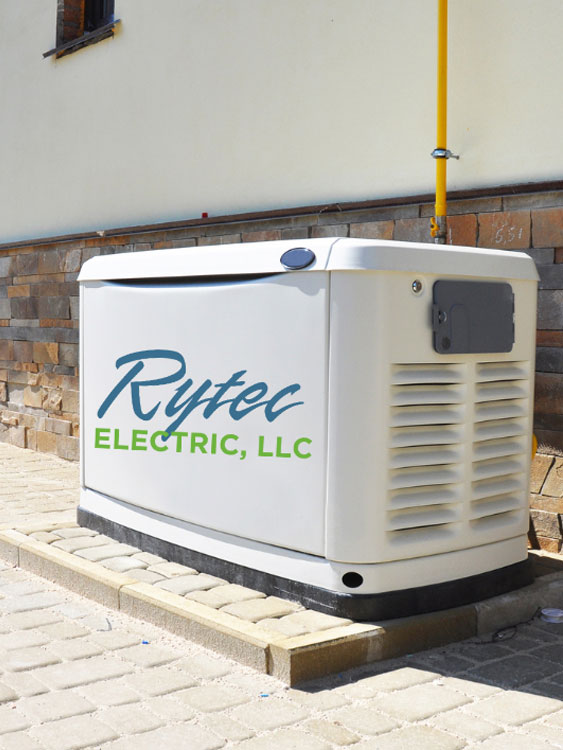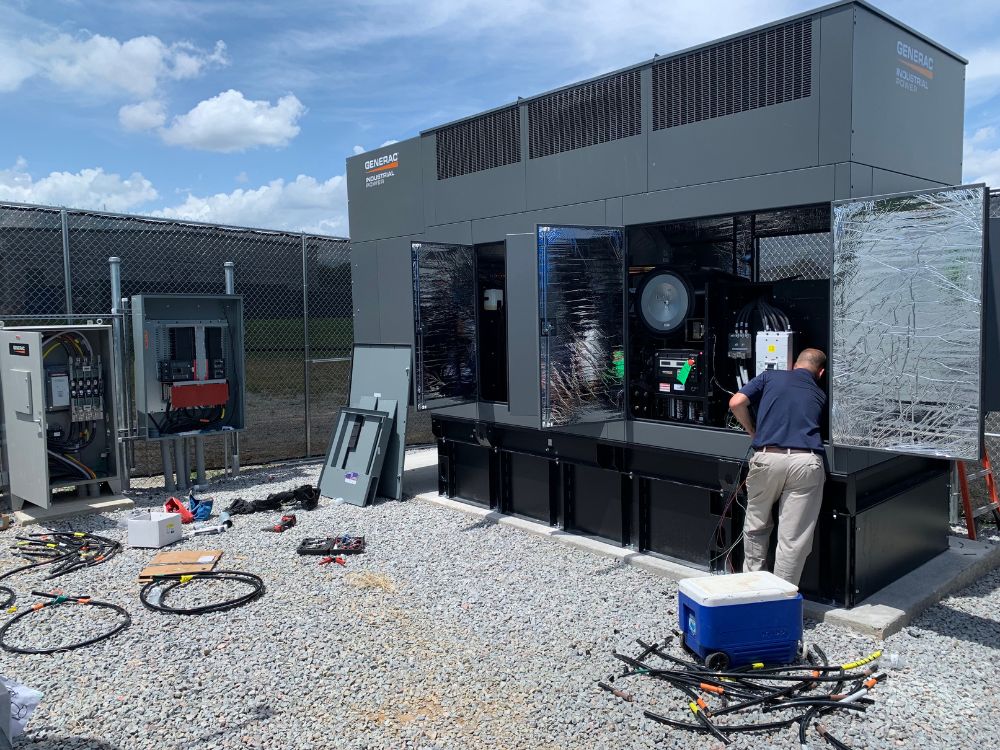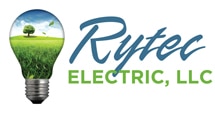How to Correctly Size A Backup Generator for Your Business
When the power goes out, most businesses grind to a halt. In the best case scenario, this is an inconvenience, with customers stumbling around in the dark and POS systems sitting like useless paperweights. However, for businesses ranging from small bakeries to large-scale manufacturing, even a short power outage can be catastrophic.
While none of us can control our local power grid or the increasingly severe weather events that threaten it, a commercial standby generator is a cost-effective way to avoid the pitfalls of unexpected downtime. Even as the buildings around yours go dark, you’ll be able to continue operations.
However, an important question that is not always so easy to answer is: how large of a commercial generator does your business need? This article will examine this surprisingly complex question, and give you a better idea of what size generator is appropriate for your business!

Understanding Your Power Needs
Ensuring your business has the right backup generator starts with a clear understanding of your power requirements. This step is crucial, as underestimating your power system needs can leave critical systems inoperational, while overestimating can lead to paying for more generator capacity than your business will ever need
.
Determine Your Business’s Total Power Requirements
Accurately calculating how much power generation capacity your business will need during an outage is vital. Historical data is a decent way to get a ballpark estimate of your power usage, but an energy audit is recommended.
Using Historical Demand
A quick and dirty way to estimate how much power output your backup generator needs to provide is to consult your utility bills. Find your business’s highest peak demand in kilowatts in the past 12 months and then add 25% to that figure for reserve capacity.
For retail applications, warehouses, and commercial buildings this estimate is good as a starting point, however we do not advise using this method alone.
With a Professional Energy Audit
The best way to determine your business’s energy needs is to have a professional electrician perform an energy audit. This is particularly true for businesses which have pieces of equipment with high powered electric motors as these have high peak usage on startup which cannot be accurately assessed just from looking at utility bills.
Similarly, if your business is running a combination of single-phase and three-phase power (as is common in manufacturing facilities) you will benefit from a professional evaluation.
Incorrectly sizing your generator may mean your business does not have enough running wattage to maintain a stable supply voltage. This can result in insufficient voltage to operate equipment and in some cases may even damage sensitive electronics.

Understanding Generator Sizes
When selecting a backup generator for your business, the generator’s size, measured in “full-load kilowatts”, is a critical factor. This size, also known as full load capacity, doesn’t refer to the physical dimensions of the generator but to its continuous electrical output capacity.
Note: A kilowatt (kW) is a unit of power that is equal to 1,000 watts. Watts, amps, and volts are all related measurements which can be mathematically derived from one another: Watts = Amps x Volts
Comparing Generator Sizes
- <15kW Generators: Generators of this size are often portable generators – and are designed for light-duty applications such as camping or providing emergency power to a few home appliances during outages.
- 25kW Generators: Ideal for small businesses or specific essential operations. These generators can support critical lighting, computers, POS systems, and small appliances. They’re perfect for supplying businesses like small retail shops or offices without heavy machinery with the backup power they need to keep essential services running.
- 50kW Generators: Suited for medium-sized businesses with more substantial power needs. This capacity can comfortably handle HVAC systems, refrigeration, and some machinery, making it suitable for restaurants, pharmacies, medium-sized retail stores, or small manufacturing units during a power outage.
- 100kW Generators: Designed to meet the demands of larger commercial applications or small industrial operations. With 100kW, you can support a significant portion of a manufacturing process, larger HVAC systems, and comprehensive lighting setups. This size is suitable for businesses that cannot afford any downtime and need to maintain all or most operations during an outage, like larger manufacturing facilities or commercial buildings.
- 250+kW Generators and Beyond: These industrial generators are for large-scale applications or facilities that require a substantial power supply, such as data centers, large manufacturing plants, or businesses that need to keep multiple heavy-duty machines running simultaneously. Generators of this size are capable of powering entire facilities with high power demands, ensuring no interruption to production lines, large-scale refrigeration systems, or critical data infrastructure.
Choosing the Right Size Generator
Every business has unique energy needs, and thus there is no one-size-fits-all power solution. In addition to identifying what size generator your business needs, you will also need to give some thought to energy sources like propane, natural gas, or diesel fuel, and consider size and noise requirements.
Figuring out all of this on your own can be a little overwhelming, and so we recommend getting an energy audit in order to determine what type of generator is right for you. Once you’ve determined what size generator you need, have a professional electrician perform the installation. Generator hookups are not a DIY project and should only be left to the pros!
